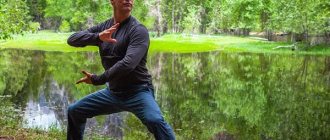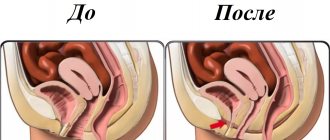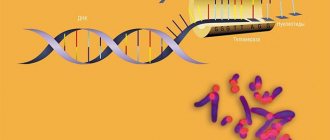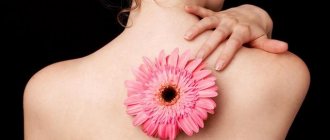How to choose the right exercise system?
In many ways, the choice of technique depends on contraindications for health reasons and the presence of chronic diseases. If there is a long-term illness, low energy and excess weight, exercises are used in a sitting or lying position. For weakened people, static exercises are recommended, and if there are no contraindications, a dynamic complex can be used. If there are no obvious violations, you can proceed to the standard course in a group.
The area of the body on which you decide to focus is also taken into account. If a student suffers from low blood pressure, it is advisable to focus on the upper body. As a result of regular exercise, blood pressure can normalize. If a person suffers from high blood pressure, it is advisable to focus on the arches of the feet.
For people who spend most of their working time in intellectual work and lead a sedentary lifestyle, it is advisable to pay attention to the lower limbs. You can focus on the middle area for cycle disorders in women.
https://shiyanbin.ru/qigong_in_moscow/ qigong classes are divided into the following areas:
- Ba Duan Jing. The technique is also called “eight magnificent movements.” The complex is based on a smooth transition from one pose to another. There is an alternation of muscle relaxation and tension.
- Liu Ji Jie. The practice literally translates as “The Art of Creating Six Healing Sounds.” The popular breathing practice is known for making characteristic sounds as you exhale.
- Wu Qin Xi. Also called "Five Animal Games". The exercises are aimed at simulating the actions of a crane, deer, monkey, bear, and tiger.
- And Jing Jing. The literal translation is “classical gymnastics for muscles and tendons.” The complex is aimed at developing flexibility and strength, includes tension in joints and muscles, body turns, twisting and bending.
After solving existing problems, it is advisable to move on to other parts of the body and change practice. You should not rely on another person’s set of exercises, as the load may be excessive or ineffective.
Chinese gymnastics
The most common Asian system of maintaining physical fitness is Chinese qigong gymnastics. Explaining what it is is simple, but understanding and feeling the full depth of philosophy is quite difficult.
Qigong itself is a Chinese breathing exercise and a set of exercises that must be performed with a fresh mind, fully concentrating on movement. Regular exercises allow you to tidy up all the muscles of the body, even the face, ligaments, skin, and also improve your mood.
A person, according to the monks, learns when doing this to control the vital energy “Qi”, which exists in each of us, and in all of nature. By directing energy within himself, the practitioner releases it through exercise and breathing, restoring balance.
The seriousness of this area of gaining longevity is evidenced by the fact that it was invented by a Chinese commander. Not only did he ensure that his warriors were equipped, fed and trained, but they were also in the right physical and emotional shape for battle. The use of this system allowed people to maintain the strength of their muscles and ligaments during exhausting hikes.
The influence of gymnastics not only on the physical, but also on the emotional component attracted the attention of Taoist monks, who began to use it. After this, Qigong became part of the compulsory training of Wushu warriors and martial artists in China. There are different exercises for different levels of training, difficult for strong and experienced people and simple for beginners.
Execution Rules
In order to feel the effect of exercising, feel the energy, qi, you must adhere to the rules, such as:
- Movements are smooth.
- The leading role is given to breathing, everything begins and ends with it.
- The tongue is pressed with the tip to the palate.
- The eyes are relaxed and focused.
- Clothes do not create discomfort or tension.
- The room for exercise needs to be spacious and well ventilated. Great to do outside.
- All thoughts are discarded, you should think only about the exercise.
- There is no excessive tension in the muscles.
- Avoid taking cold showers after exercise.
- A tangible effect is noticeable only with regular exercise.
- All exercises are performed on an empty stomach.
- The ideal time to do gymnastics is early in the morning, immediately after waking up.
Basic exercises
Before class, do a light warm-up so that cold muscles do not restrict movement. There are many exercises of varying difficulty levels for lazy older people, to master them smoothly, just add one or two a day. This way you can not only remember them, but also understand their essence more deeply.
Do each exercise at least six times. They alternate with each other, smoothly flowing from one to another. Beginners can do 3 repetitions to avoid overexertion in the first stage. After some time, when the body gets used to it, you can do more approaches and extend the execution time.
The basics of qigong include the following exercises:
- Normalization of breathing. Stand up straight so that your feet are shoulder-width apart and your back is vertically straight. Slowly, along with inhalation, the straightened arms are raised, palms down to shoulder level. As you exhale, slowly bend your legs to a quarter squat. Your palms should rest on your knees. Repeat 3-6 times.
- After this, you need to slightly supplement the previous exercise. The difference is that at the top point the palms turn towards each other and spread apart. Lifting and spreading should be done in one breath.
- After the previous steps have been completed 3-6 times, raise your arms above your head while inhaling. As you exhale, the upper limbs swing to one side, the leg towards which the tilt is made bends slightly. You need to imagine that there is a rainbow on top, along which your palms are moving.
- The next action is similar to diluting fog. Hands from the top position are lowered to the side to the bottom point and crossed. At this time, the legs bend slightly.
All actions must be performed while focusing on breathing. It is the correct opening of the bronchi that brings the most positive effect.
How to master methods of concentration, translation and switching the focus of attention?
Practicing qigong will not work without a meaningful approach. The practice involves immersion in complete tranquility. This is a kind of rest for the cerebral cortex. But it is important to learn how to perform each exercise correctly.
The basic rule for completing a set of qigong exercises is “Immersion in a state of rest.” It is advisable not to combine different entry methods. For this purpose, a system of entering and exiting the state, direct repetition of the setting, control of the breathing rhythm, and counting to oneself are used. The result is to disconnect from external irritating factors and remove negative effects on the cerebral cortex.
To understand the technique of concentration, you need to follow simple rules:
- the student must strive for a state where “something seems and seems to be missing”;
- concentration seems to be there and at the same time it is not there;
- it is not brute force that is used, but thought;
- concentration should not be excessive and cause severe tension;
- no conscious or rational concentration is allowed;
- one should not do without mental action.
Methods of concentration differ depending on the predominant disease. Those with low blood pressure focus on the upper part of the body, while those with high blood pressure focus on the lower part. It is also possible to be distracted by shades. If you have lung diseases, be distracted by white shades, if you have liver diseases - by green tones, if you have problems in the stomach or spleen - yellow tones, and if you have problems with the kidneys - violet tones.
If it is difficult to concentrate, it is better to first shift your attention to an external object. Switching focus works like this: you need to select an object and stabilize it, focus on it, disconnect from it and switch focus to the dantian area. Over time, a serene state can be achieved, enhanced by true chi energy. As a result, health gradually improves and inner strength increases.
What is Qigong?
Basics
You probably know that qigong is an ancient Chinese system that helps you gain and maintain health, live long and in harmony with the world. It includes physical, breathing exercises and meditative practices.
The word “qigong” is formed from the fundamental concepts of “qi” (flow of energy, life force) and “gong” (achievement, work). “Qigong” was first used as a designation only in 1949! The conceptual basis of Qigong is the principles of Yin and Yang and the all-pervading energy of Qi. Then the cultural and philosophical emphasis shifted, and the health benefits of qigong became basic.
History of qigong: briefly about the main thing
The “age” of qigong is from 5000 to 7000 years. Qigong is diverse: dozens of schools and directions are known. The first literature about these practices in the 20th century. published in 1958: it was Liu Guizhen’s book “A Practical Course of Qigong Therapy.” A special place in qigong is occupied by the Zhong Yuan direction - the most ancient known. It was opened to the world only in the 70s. XX century
Body and mind in qigong: how do they interact?
Qigong is based on the discipline of body, breath and mind. It was through restrained movements, proper breathing and concentration that the Chinese sought to resume the natural movement of qi energy in the body and get rid of diseases. Most qigong systems are based on three components: the concept of the five primary elements, the idea of energy channels and biologically active points.
When is the best time to practice qigong?
In accordance with the practice of traditional Chinese medicine, the flows of qi and blood circulate (circulate) through special energy channels - a system of meridians and collaterals. During daylight hours, a closed circulation cycle occurs in the human body along 12 meridians. Every 2 hours, a certain meridian dominates, and the opposite meridian retreats as much as possible in its action.
The optimal time for classes is from 3 to 5 am. Previously, doctors in the Middle Kingdom believed that the correct qi energy was concentrated in the lungs. Ancient works indicate that this organ is not only the place where true energy is generated, but also keeps the entire body in balance. This time period is the period of the birth of yang power. This period is excellent for therapeutic and preventive measures.
You can also set aside time around 12 noon, when training will be fruitful due to maximum Yang. You can also highlight the time at 12 o'clock at night, when maximum Yin is characteristic.
Often today they train in the morning before work. 30-40 minutes is enough for quality training and a surge of energy for the whole day. It happens that evening workouts are preferable. In this case, classes are postponed until after the end of the working day.
Qigong practitioners
Main directions of qigong: historical approach
- The Confucian direction (V-IV centuries BC) was focused on ethical aspects: regulation of emotions, development of moral qualities, improvement for the common benefit.
- Taoist direction (III century BC), tradition of “internal alchemy”.
- The Buddhist movement emerged at the turn of the new era after the arrival of Buddhism from India to China. The practices here are of a different nature: contemplation and visualization of mandalas, pronouncing mantras.
- The school of martial arts (Wushu Qigong, hard and light Qigong) strengthened the body and spirit for successful martial arts and self-defense:
- The practice of hard qigong makes the body insensitive to blows and teaches you to instantly concentrate qi energy on the desired area of the body.
- Light qigong allows you to move quickly and for a long time without rest, and easily climb steep mountains.
The main directions of qigong: a practical approach
Respiratory-Motor Qigong:
- “Yi Jin Jing” is a system of self-improvement, including gymnastics, breathing exercises, maintaining a healthy lifestyle and methods of regulating consciousness;
- “Baduanjin” is a set of breathing and physical exercises with mandatory concentration. Increases body tone and relieves fatigue. Suitable for recovery after physical or mental stress.
Meditative Qigong:
- “Zhang Zhuan” - static exercises, the basis of all qigong training;
- “Taoist alchemy” is based on the concepts of naturalness and unintentionality.
All exercises can be performed both indoors and outdoors.
Why is it necessary during qigong training?
For successful exercises, you first need to become familiar with belly breathing. It is necessary to perform thin, long, even and smooth inhalations and exhalations. Don't use chest breathing. Deep and diaphragmatic breathing from the belly will do. Qigong masters consider the main task of training to be training qi dantian. This type of breathing is associated with strengthening the body. development with proper breathing practice.
It is advisable not to start doing active exercises initially, but to learn breathing techniques. Energy enters the body through the nose, descends into the stomach, and flows throughout the body.
Why do I sometimes experience a feeling of tongue root, dry mouth and dry lips during qigong practice?
In some cases, during exercise there is a feeling of dryness in the mouth and lips, and a feeling of hardening of the tongue. During classes, you need to monitor the position of your tongue. It should be relaxed, and the tip lightly touches the palate behind the alveoli located above the teeth.
It is important to act lightly and naturally. If there is a feeling of hardening of the tongue, the procedure is broken. Also, the conditions may be met, but with excessive or unnatural effort. Such deviations can be corrected, but you must strictly follow the requirements of practice. If such conditions appear constantly, it is better to suspend the practice and do everything correctly.
What should you do if you sweat profusely while doing exercises?
If a student sweats a little during class, this condition is normal. If sweating becomes excessive, this condition can lead to collapse.
The following processes lead to this result:
- improper, intense breathing with excessive activation of the circulation of qi energy;
- increased concentration;
- excessive physical stress.
As a result, the sweat glands begin to work actively. To prevent this from happening, it is advisable to interrupt the workout, relax a little and calm down. Only after this can you continue training.
What is contraindicated and what should you pay attention to during qigong training?
There are the following contraindications to training:
- serious lesions in the musculoskeletal system;
- general serious condition;
- blood diseases;
- tachycardia or heart defects;
- serious mental disorders;
- traumatic brain injury;
- spinal lesions.
The greatest harm is observed during classes in the case of independent study without the guidance of an experienced instructor or master. It is especially dangerous to train if you do not have experience working with a specialist.
Experienced qigong practitioners recommend postponing classes if chronic diseases worsen, if you are taking a large amount of medications, if you are very tired, or if you overeat. After eliminating these factors, you can return to exercise.
The main reason is the individual approach of the master, taking into account the state of each teaching. In good centers, the teacher works with students individually or gathers small groups. If you act on your own, you may miscalculate the load or make excessive efforts.
To rule out possible problems, you should consult with your doctor. This is especially important in the presence of chronic diseases. It is also worth familiarizing yourself with the list of contraindications for playing sports. Next, you need to identify the disease limitations of a particular specialist, since practice may differ depending on the choice of specialist.
Master Shi Yanbing's school conducts testing and interviews before admission to the course. As a result, groups are formed in which health and general well-being are taken into account. This takes into account physical development.
The benefits of qigong: what, for whom and how
What in Qigong is suitable for everyone?
You will not need any artificial changes in your lifestyle, daily routine or diet. You can practice this qigong regardless of your initial level of physical fitness. This is what those who lead a sedentary lifestyle need.
Selected methods and results of using qigong
- Balance exercises use stabilizer muscles that are underutilized. This way the muscle corset develops more evenly.
- Certain qigong exercises are aimed at stretching muscles and tendons, and gentle movements reduce the risk of injury. Tension and relaxation causes blood flow, tissue nutrition improves, and cellular renewal accelerates.
- Bends, turns, and twisting movements of the body improve the mobility of the spine and strengthen the supporting muscles.
All the introductory information presented allows us to move on to a story about specific qigong practices and their effect on our health.
II.
Why do you feel sore or dizzy after exercise?
Such a reaction does not always indicate the presence of a severe or chronic disease. The following problems can be identified:
- insufficient direction;
- incorrect posture;
- excessive concentration;
- prolonged concentration on a specific part of the body.
You can relieve dizziness or headache on your own. To do this, it is important to focus on the yongquan point. Then the exercise is performed - opening and closing the dantian 3 times.
Can women practice qigong during menstruation?
If your health does not deteriorate significantly, you can practice qigong even during this period. But some women may experience changes - the amount of discharge increases, the cycle shortens or lengthens. This is due to the fact that consciousness directly affects the uterine area due to concentration on the dantian. Don't be alarmed if the amount of discharge increases to 30%. This is due to the additional flow of blood to the uterus.
To exclude such conditions, you can use the following options:
- reducing the irritating effect on the dantian;
- replacing concentration with attention to good entities, organs remote from a given area;
- during this period, reduce the intensity and duration of classes.
In severe cases, it is necessary to stop exercising for several days. After the discharge is completed, training can be resumed. The main thing is to avoid spontaneous movements that can harm the body.
Features of qigong gymnastics for the elderly.
We all know the expression well: “Movement is life.” Life cannot be complete without physical activity. But with age it decreases due to natural reasons. And if you follow these reasons, you can end up in a wheelchair and become completely helpless. Only feasible physical activity will help avoid partial or complete loss of the ability to move, ensure normal functioning of the cardiovascular, respiratory systems, musculoskeletal and vestibular systems, and form a positive psychological attitude. But gymnastics for the elderly has certain features, and they must be taken into account.
Qigong gymnastics can be practiced at any age with great benefits for your own health. But in the great diversity of this gymnastics, there is a separate direction for both older people and people with poor health. For people in this category, this option of gymnastics is perhaps the most optimal, because in the practice of qigong there is no great physical activity and in mastering it is very accessible and effective, has no contraindications, affects the entire body as a whole, harmonizes the work of all organs, eliminates the root cause of the disease , does not require any special conditions or clothing for classes, because you can practice at home, in the country, in nature and on your own. Availability of free time and privacy is what is required for practicing qigong gymnastics. But, as a rule, pensioners do not have problems with this. Vice versa. Loneliness and detachment from public life often give rise to resentment from “... the bitter realization that the stream no longer carries us...”, dissatisfaction with family and friends who are always busy with their own affairs, and a feeling of “uselessness.” All this, accumulating over a long period of time, leads to depression. And the targeted practice of qigong gives a feeling of peace, relieves negative thoughts and feelings of depression, improves mental processes, gives the joy of life, the desire to live in spite of current circumstances.
Why do some people have a lot of saliva in their mouths after training, while others have little?
The main indicator of quality practice is salivation. This is the correct physiological effect that is characteristic of productive training.
In addition, you need to eat right, consuming plenty of vegetables and fruits, clean water, and lean foods. At the same time, you need to eat less spicy and fatty foods. It is advisable to exclude alcohol and smoking. Some restrictions on sexual activity are also expected. All this is required to achieve results in daily practice.
What role does sound play when performing qigong exercises?
Making sounds is part of the breathing technique. It allows you to perform exercises more accurately and speed up the achievement of results. It is important that the sound and breathing techniques are harmonious and consistent. A classic breathing technique system is used, which is characterized by the following seasons:
- heat;
- cold;
- dryness;
- humidity.
The practice correlates with the diagram of internal organs, the five elements, and the meridian system. This gives the correct balance of yin and yang substance, regulation of blood circulation and qi energy. It is important to strictly follow the master’s recommendations, observe breathing techniques and perform exercises.
This classification is associated with a system of specific sounds, such as “si”, “chuy”, “sy”, “yuy”, “he”. Depending on the position of the lips, the types of exit are named, which affect the nature and strength of the impact. The condition of the lungs, spleen, kidneys, liver and heart is taken into account. The effect on collaterals and meridians is also taken into account.
Thus, the practice of qigong allows you to gradually improve, achieving progress in training. This requires the help of a real master, who takes into account the physiological state and health of the students.
Breathing stabilization exercise: technique of execution
If you are just starting to master Qigong practices, repeat each exercise no more than three times (this will avoid muscle pain) and gradually increase the load.
Breathing stabilization exercise
- Stand up straight, relax, lower your arms down and focus your inner attention on your hands.
- Inhaling, raise your arms, palms down, in front of you to shoulder level or slightly higher.
- As you exhale, bend your knees until your knees are over your toes. In this case, the back should remain straight, the head should be slightly tilted, and the chest should not move. Simultaneously with bending your knees, smoothly lower your relaxed arms down. When your hands touch your knees, straighten your legs.
IMPORTANT! Keep your back straight throughout the entire exercise. Remember that the upward movement is always performed while exhaling, and the downward movement is always performed while exhaling.









